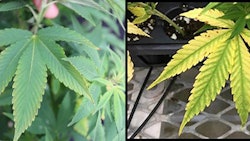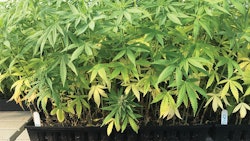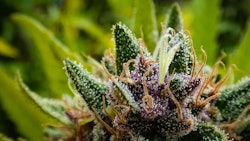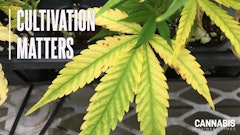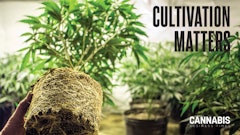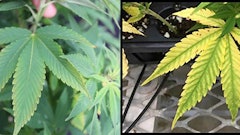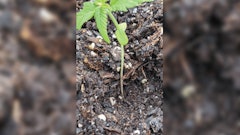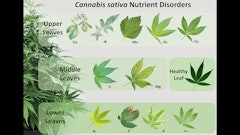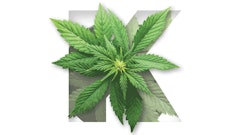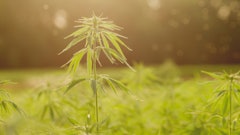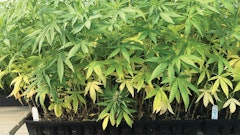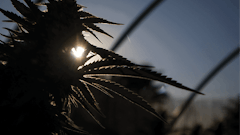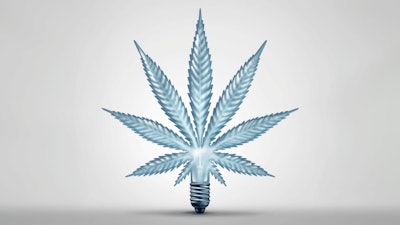
Most Cannabis cultivars grown in controlled environments are photoperiodic strains that are sativa or indica types. Generally, growers provide a vegetative period of a few weeks during which the plants build a canopy framework and increase biomass. This vegetative production phase requires less than 12 hours of continual darkness per day. Once plants reach the desired size, the reproductive phase is triggered by extending the nighttime (dark) period and consequently decreasing the daylight hours.
The key to keeping Cannabis vegetative is to avoid having more than 12 hours of continuous darkness by using day extension or night interruption to break up the 12-hour darkness period.
Day extension is the most common method used in Cannabis cultivation and simply requires adding additional hours of lighting after the natural light starts to decrease (typically around sunset). For indoor growing operations, this is commonly achieved by providing 18 hours of lighting and six hours of darkness in 24 hours.
TIP 1: As an alternative method, night interruption provides a set duration of light in the middle of the dark period to trick the plant into thinking the night was shorter than it was. This method is commonly used in commercial floriculture production for poinsettias and chrysanthemums. Historically, this method has not been used by cannabis growers, but research at North Carolina State University (NCSU) demonstrated it as a viable option (Fig. 1).
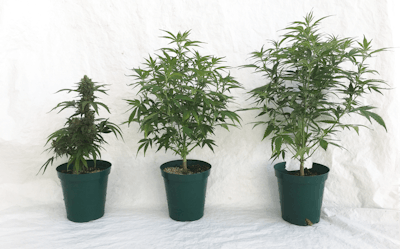
Cannabis and Light: A Delicate Relationship
Cannabis is very sensitive to light levels. Small variations in lighting can result in undesirable consequences. For example, if excessive shading occurs during long days, the plants can flower (Fig. 2). At the other end of the spectrum, smaller amounts of light provided during the dark period can prevent the plant from flowering fully.
TIP 2: Since both day extension and night interruption are effective at preventing flowering, light pollution can produce unwanted secondary effects in greenhouse bays or grow rooms. Growers must monitor their lights to ensure that only areas that need to be lit are being illuminated. This will minimize energy waste and maintain healthy neighbor relations.
While growers may use different growth timelines before inducing flowering, once flowering is induced, plants need about six to eight weeks of growth for optimal bud formation (depending on the cultivar requirements and production model).
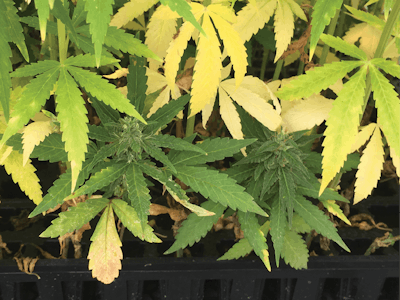
However, Cannabis may flower and then revert back to a vegetative state. These instances limit the bud formation, as well as trichome and cannabinoid production.
There are many possibilities as to why Cannabis sometimes reverts from the reproductive state to vegetative. We have found two of the most common causes are:
- Light pollution that interrupts the darkness needed to promote bud formation.
- Additional end-of-day light that occurs from natural daylight.
Light pollution can be a result of spillage from other greenhouses, such as those used for mother stock plants. For greenhouse growers, the change in natural light available to the plants as the days get longer in the spring may also disturb the flowering process.
TIP 3: The light intensity needed to prevent flowering is minimal—a good test is if you can read a newspaper at the light level comfortably, there is enough light to prevent flowering.
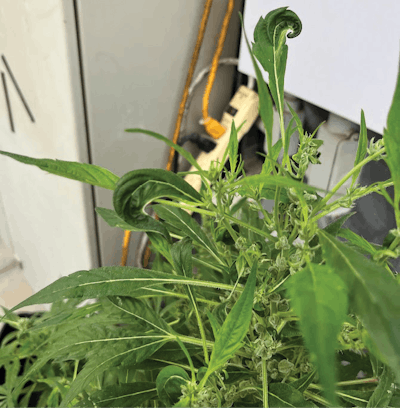
We also have observed similar problems in young plants that are planted outdoors too early in the spring before there is enough natural day length for the plants to remain vegetative. This will cause plants to stall until the critical long-day photoperiod is met to restore vegetative growth, in turn leading to decreased growth compared to plants that were transplanted when there was enough natural daylight.
TIP 4: To prevent plant stalling, outdoor growers should ensure their natural daylight is greater than 15 to 16 hours before transplanting Cannabis in the field in the spring. While this is a rough guideline, this will change based on latitude, light intensity and cultivar according to recent research reported by Zhang et al.
A reduction of just 15 minutes of critical light duration can cause a delay of up to two weeks in vegetative development, demonstrating how critical the photoperiod is to plant development.
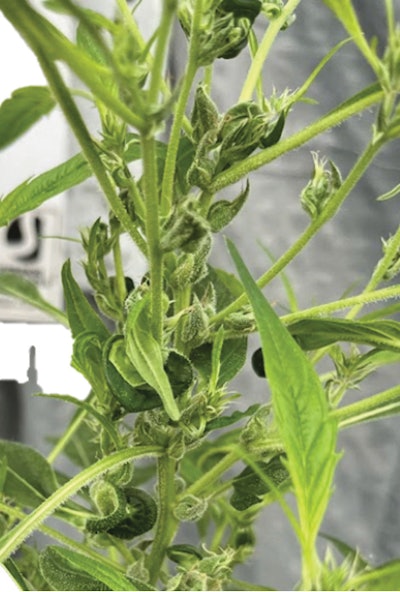
Look For Signs
There are several visual indicators that plants are beginning to revert. TIP 5: One of the most common signs of reverting is plants stalling during bud formation (Fig. 3). Growers might notice some plants in a growing area are developing normally while others exhibit an increase in fan leaf development and looser buds.
TIP 6: Another symptom is a change in leaflet number and leaflet swirling when the plants are further along in reverting into a vegetative state (Fig. 4). This spiraling can be attributed to inner veins failing to separate from the margin when the leaf morphology reverts back to the vegetative state.
TIP 7: Since Cannabis must receive roughly eight weeks of critical night length for optimal bud development, greenhouse and outdoor growers should be aware of what the natural photoperiod is, as well as ensure there is no light pollution. This will allow their plants to receive a full eight weeks of bud development, maximizing yield.








